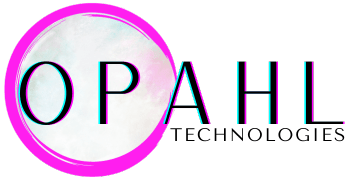Navigating the Future of Cybersecurity: The Urgent Need for Adaptable Regulatory Frameworks in the Age of AI
As the world becomes increasingly interconnected and reliant on technology, the threat of cybercrime looms larger than ever. With the rapid advancement of artificial intelligence (AI), the cybersecurity landscape is undergoing a profound transformation, presenting new challenges for policymakers and regulatory authorities. In this blog post, we will explore the pressing need for adaptable cybersecurity regulatory frameworks that can keep pace with the evolving nature of AI-driven threats.
The Staggering Cost of Cybercrime
The financial impact of cybercrime is already staggering, and it’s only expected to grow in the coming years. According to recent projections, the cost of cybercrime is set to reach an astonishing $13.82 trillion by 2028. As AI-enhanced attacks become more sophisticated and prevalent, this figure is likely to escalate even further. The potential economic damage underscores the urgency for robust cybersecurity measures and forward-thinking regulatory frameworks.
The UK’s Proactive Approach
Recognizing the gravity of the situation, the UK government has taken proactive steps to bolster cybersecurity in AI models and software. New regulatory measures have been introduced, mandating developers to design AI products with built-in resistance to unauthorized access, alterations, and damage. This forward-thinking approach sets a powerful precedent for other nations to follow, emphasizing the importance of proactive regulation in the face of evolving threats.
Developers’ Concerns and the Need for Future-Proof Regulations
While the UK’s initiative is commendable, it also highlights the concerns shared by many developers in the industry. A recent survey revealed that a staggering 72% of developers believe current privacy regulations are not future-proof. Moreover, 56% express apprehension that dynamic regulatory structures could inadvertently introduce new threats, while 30% question the ability of regulators to fully grasp the intricacies of the technology they oversee.
These concerns underscore the need for policymakers to engage closely with the technology community and develop regulations that are not only robust but also adaptable to the rapidly evolving landscape of AI and cybersecurity.
The Security Risks of AI Training
One of the most significant challenges in the realm of AI and cybersecurity lies in the vast datasets used for AI training. As AI models become more sophisticated and reliant on massive amounts of data, the risk of security breaches and misuse becomes increasingly pronounced. Inconsistent or evolving regulations could create vulnerabilities that malicious actors can exploit, leading to devastating data breaches and compromising sensitive information.
To mitigate these risks, it is crucial for policymakers to collaborate closely with technology creators and develop regulatory frameworks that prioritize data security and privacy while allowing for the responsible development and deployment of AI systems.
Charting a Path Forward: Recommendations for Policymakers
To effectively navigate the complex landscape of AI and cybersecurity, policymakers must adopt a proactive and adaptive approach. Here are three key recommendations:
1. Continuous Learning: Policymakers must prioritize ongoing education and skills development to stay abreast of the latest advancements and threats in the realm of AI and cybersecurity. By investing in their own knowledge and expertise, regulators can make informed decisions and craft effective policies that keep pace with technological progress.
2. Collaboration with Technology Creators: Engaging directly with developers and technology creators is essential for designing regulations that are practical, effective, and aligned with the realities of the industry. By fostering open dialogue and collaboration, policymakers can ensure that new technologies are developed with existing regulatory frameworks in mind, minimizing the risk of unintended consequences.
3. Dynamic and Adaptive Regulatory Frameworks: Perhaps most importantly, regulatory frameworks must be designed with flexibility and adaptability at their core. As AI technologies continue to evolve at an unprecedented pace, regulations must be able to keep up, allowing for timely adjustments and updates in response to emerging threats and opportunities.
The Path Forward: Embracing Adaptability and Collaboration
As we navigate the uncharted waters of AI and cybersecurity, it is clear that the status quo is no longer sufficient. The rapid advancement of AI technologies demands a new approach to regulation – one that prioritizes adaptability, collaboration, and continuous learning.
By designing regulatory frameworks that can evolve alongside technological advancements, policymakers can help ensure that the benefits of AI are harnessed while mitigating the risks posed by malicious actors. This will require a concerted effort from all stakeholders – policymakers, technology creators, and industry experts – working together to build a safer, more secure digital future.
The stakes could not be higher. As the cost of cybercrime continues to mount and AI-driven threats become more sophisticated, the need for proactive, adaptable cybersecurity regulation has never been more urgent. It is up to us to rise to the challenge and embrace the opportunity to shape a regulatory landscape that is both effective and future-proof.
#CybersecurityRegulation #AIThreats #AdaptableFrameworks
-> Original article and inspiration provided by Open Access Government
-> Connect with one of our AI Strategists today at Opahl Technologies


